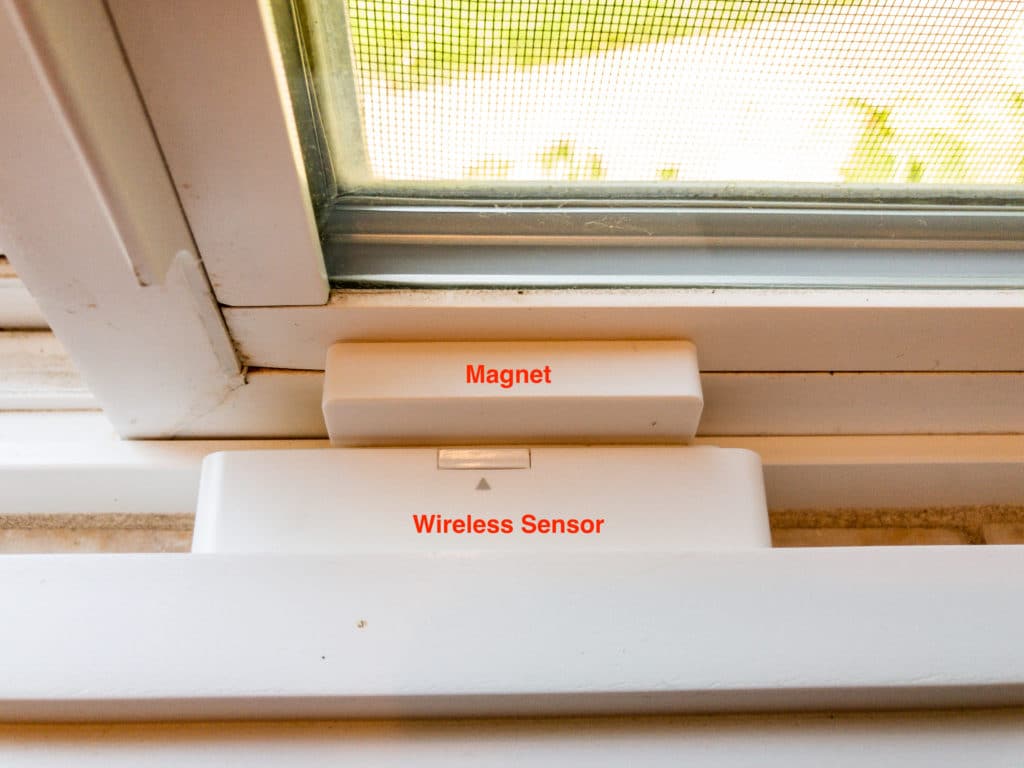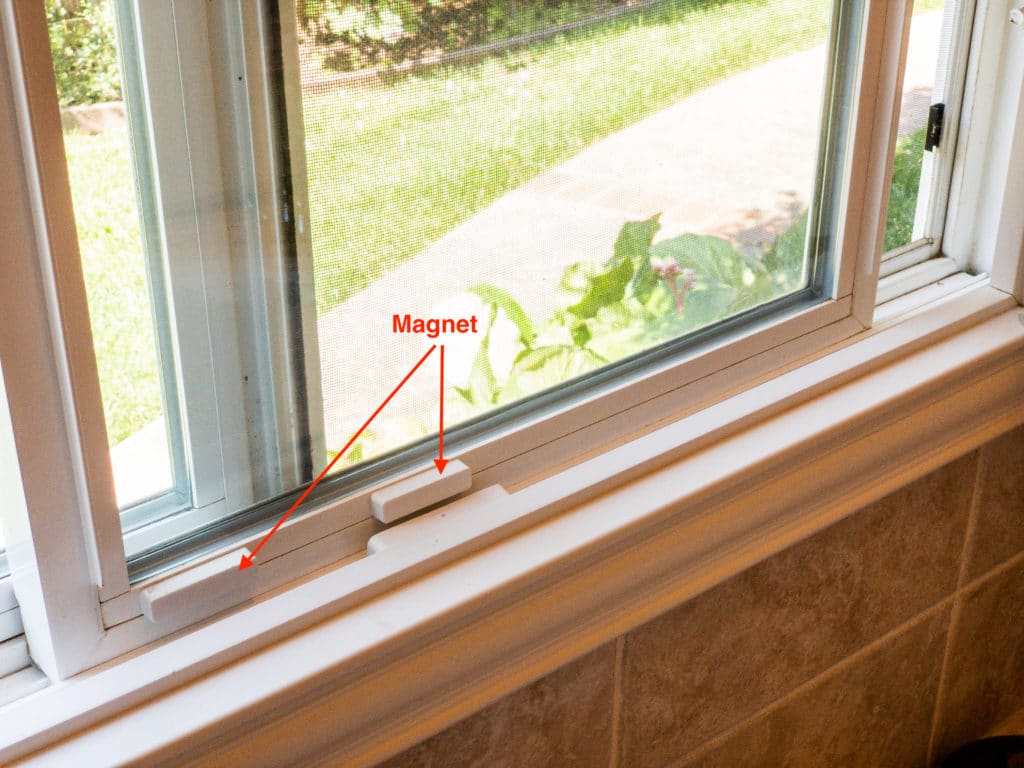
Never trust a computer you can’t throw out a window
Steve Wozniak, the co-founder of Apple Computer, was probably thinking about inscrutable mainframes when he came up with this one.
But on a hot summer day, do you have to sacrifice your physical security to open that window and catch a breeze?
Here’s an inexpensive tip to improve your home alarm security system.
Window sensors – the backbone of every smarthome alarm system
Both do-it-yourself (DIY) and professional security systems rely on window and door sensors to keep your home secure.
These little devices keep watch over your home and alert you when a physical breach has occurred.
Builder installed or contractor installed systems use wired sensors while DIY or do-it-for-me (DIFM) retrofits use wireless sensors for easier installation.
Both wired and wireless door or window sensors most often use the same technology. Reed switches are interesting devices and rely on magnetism to do their job.
Tip: Are you looking for a smarthome security system you can install yourself? Check out this buyer’s guide of DIY security systems for some ideas.
How a door/window sensor works
A window sensor consists of two small pieces. The main sensor device has all the electronics and a reed switch. The switch is a small glass tube with two small pieces of metal inside.
When the metal pieces touch, the circuit is closed and the signal is sent by wire or wireless connection to the system controller.
The second piece is simply a small permanent bar magnet in a tiny plastic case.
When the magnet is physically close to the reed switch, the magnetic field draws the two pieces of metal inside the switch together closing the circuit.
Installation is easy – just put the main sensor on the window frame and the magnet on the window itself using sticky foam tape.
It doesn’t really matter which is which. You can put the sensor on the window and the magnet on the window frame instead – whatever fits best.
When the window is opened, the magnet moves away from the sensor and the switch is activated.
The following photo shows a typical installation. The larger plastic is the wireless sensor and the smaller piece on the window itself is the magnet.

This is a TL;DR explanation
Not trying to get into the boring details of NO (normally open) versus NC (normally closed) relays, electric current strengths, magnetic field patterns and all the other physics stuff.
The only thing we need to know is that the magnetic has to be close to the sensor, but not touching it so the door or window can be opened freely.
For more info on how reed switches work, just look it up.
The fresh air conundrum
Easy peasy but there is one problem: How to open the window and get fresh air without tripping the alarm.
During the hot summer months, we want to open the windows a bit to get a fresh air breeze but still keep the security system activated.
Many alarm systems have a home and an away mode. In away mode, everything is activated and having any window open will prevent you from arming the system.
In home mode, you can leave windows open, but all the window sensors are ignored. Hopefully, your system still allows doors to be armed and only ignores the windows.
But that’s not very good. We really want to be able to keep some windows open but still have the system fully armed.
Here’s the home automation secret that is easy to do:
Use additional magnets to create a second safe setting for your windows that allows you to open them partially and keep the system armed.
The magnets do not have any electronics or circuitry in them. The alarm system does not know, or care, if you use more than one.
In this photo, I have installed a second magnet a few inches away from the first. Now I can open the window but it will still be considered closed by the alarm system.

You get to choose how much risk you want. With the window open only a small amount, any intruder still has to push it open wider to be able to climb through and that triggers the alarm.
I’ll open and close with this tip
Lot’s of good inexpensive sensors are available. Here’s a few to choose from:
Aqara door and window sensors – Small, reliable, and less than $20 each
Eve door and window sensors – Well respected supplier of many Apple HomeKit certified devices
Aotec Z-Wave multi-sensors – Wide compatibility with a range of home automation hubs and systems
If you want to consider a complete DIY home security system, which includes doors and window sensors and much more, you’ll probably want to do some research and start by looking at these systems:
Ring Security System – High ratings, affordable, and really inexpensive monthly monitoring options
Aqara SmartHub M2 – This can be the brains for not just sensors but an entire low-cost alarm system that is also Apple HomeKit certified
